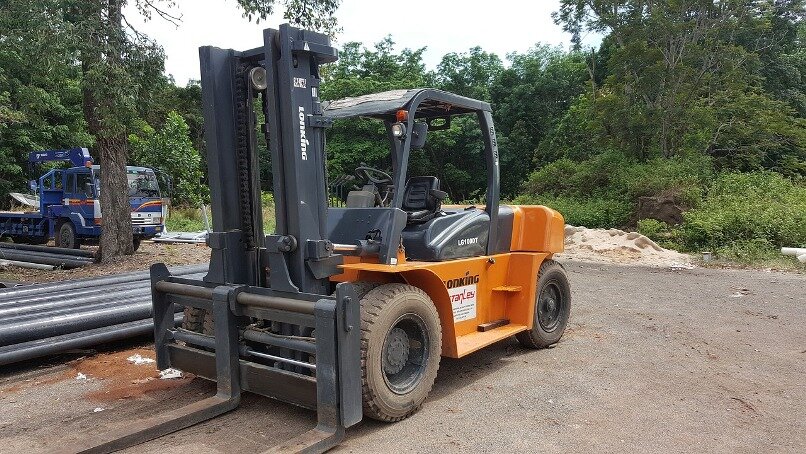Mastering the Incline: A Guide to Safely Driving Forklifts on Inclined Surfaces

Introduction
Forklifts are indispensable workhorses in warehouses and industrial settings, simplifying the task of lifting and transporting heavy loads. However, the dynamics of operating a forklift change significantly when faced with inclined surfaces, such as ramps or slopes. To ensure a safe and efficient work environment, it is crucial to master the art of driving forklifts on these challenging terrains. In this guide, we will delve into the key considerations and techniques for safely navigating inclined surfaces.
Understanding the Challenge
Driving a forklift on a flat, level surface is one thing, but when confronted with inclines, operators need to be extra vigilant. Inclined surfaces pose unique challenges that demand a heightened awareness of the forklift’s center of gravity, load stability, and braking capabilities. Neglecting these factors can lead to accidents, injuries, and damage to both the forklift and the surrounding infrastructure.
Key Considerations for Safe Forklift Operation on Inclined Surfaces
- Load Distribution and Center of Gravity:
One of the fundamental principles of forklift safety on inclines is understanding the impact of load distribution and the forklift’s center of gravity. When driving uphill, the center of gravity shifts forward, making the forklift more prone to tipping. Conversely, when descending, the center of gravity shifts backward. To counteract these effects, it is essential to keep the load as low as possible and centered on the forks.
- Proper Forklift Positioning:
Before attempting to drive a forklift down a ramp or up an incline, ensure that the forks are positioned correctly under the load. The forks should be spaced evenly to provide optimal stability. Misalignment can lead to an unbalanced load and increase the risk of tipping, especially on inclined surfaces.
- Choose the Right Forklift for the Job:
Not all forklifts are created equal, and the choice of forklift can significantly impact safety on inclined surfaces. Select a forklift with the appropriate specifications for the task at hand. Forklifts with a lower center of gravity and a robust braking system are generally better suited for navigating slopes and ramps.
- Maintain a Safe Speed:
Speed control is paramount when driving a forklift on inclines. Excessive speed can compromise stability and increase the risk of accidents. Always adhere to the recommended speed limits and adjust your pace based on the incline’s steepness. Gradual acceleration and deceleration are crucial to maintaining control and preventing the forklift from sliding or tipping.
- Uphill and Downhill Driving Techniques:
When ascending an incline, approach it straight on and head-on to minimize the risk of tipping. Engage a low gear and maintain a steady speed. Avoid sudden movements or sharp turns. Conversely, when descending, proceed in reverse whenever possible, allowing better control and visibility. Keep the load uphill to enhance stability.
- Brake Safely:
Braking on inclined surfaces requires a delicate touch. Abrupt braking can lead to skidding, loss of control, and potential accidents. Use the forklift’s brakes judiciously and engage them early when approaching a descent. Additionally, consider using the forklift’s gears to assist with braking, especially when moving downhill.
- Conduct Regular Inspections:
Regular maintenance and inspections are crucial to ensuring the safe operation of forklifts on any surface, including inclines. Check the brakes, tires, and other essential components regularly. Address any issues promptly to prevent unexpected malfunctions that could pose a threat when navigating inclined surfaces.
- Operator Training and Certification:
Proper training is the foundation of safe forklift operation. Ensure that all forklift operators undergo thorough training, including specific modules on driving forklifts on inclined surfaces. Certification programs should cover the unique challenges posed by slopes and ramps, equipping operators with the knowledge and skills needed to handle these situations safely.
In addition to the fundamental principles outlined above, communication and coordination play pivotal roles in the safe operation of forklifts on inclined surfaces. Establish clear communication protocols among forklift operators, ground personnel, and supervisors. This ensures everyone is aware of the movements and locations of forklifts on slopes, minimizing the risk of collisions.
Furthermore, be vigilant of changing weather conditions that can impact the surface traction on ramps and slopes. Wet or icy surfaces can significantly reduce traction, making it imperative to adjust driving techniques accordingly. In such conditions, operators should exercise even greater caution, reduce speeds, and increase following distances.
Investing in advanced forklift technologies, such as anti-slip features and stability control systems, can also enhance safety on inclined surfaces. These technologies provide an additional layer of protection, assisting operators in maintaining control and stability during challenging maneuvers.
Conclusion
Mastering the art of driving forklifts on inclined surfaces is a critical aspect of forklift safety in industrial settings. By understanding the unique challenges posed by slopes and ramps and implementing the recommended techniques, operators can enhance safety, prevent accidents, and ensure the efficient movement of goods. Prioritizing proper training, regular maintenance, and adherence to safety guidelines will contribute to a secure and productive workplace environment. So, the next time you find yourself behind the wheel of a forklift facing an incline, remember these key considerations to drive safely and confidently.

